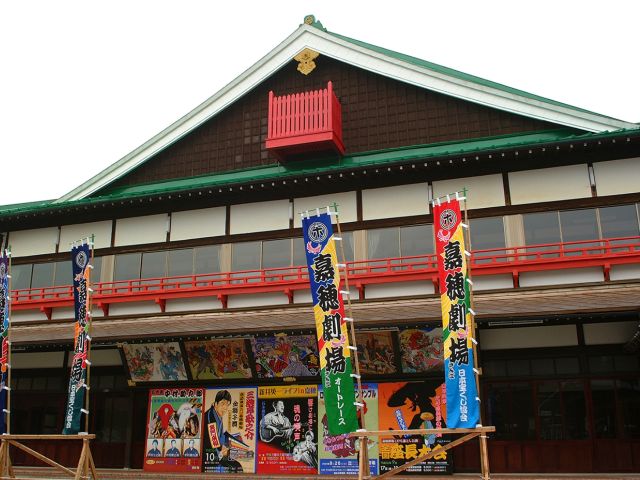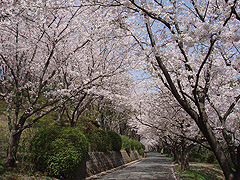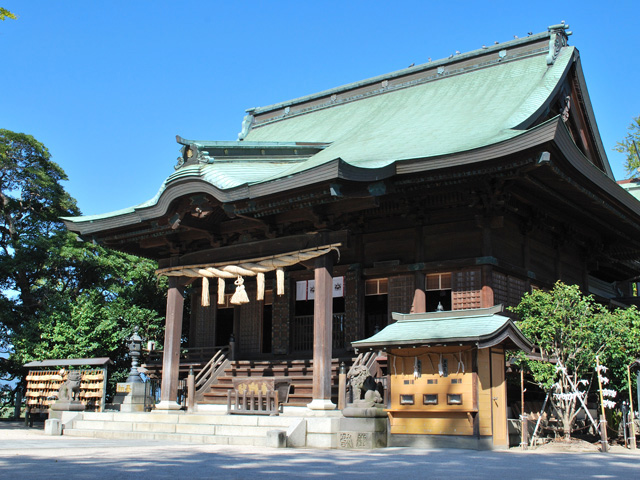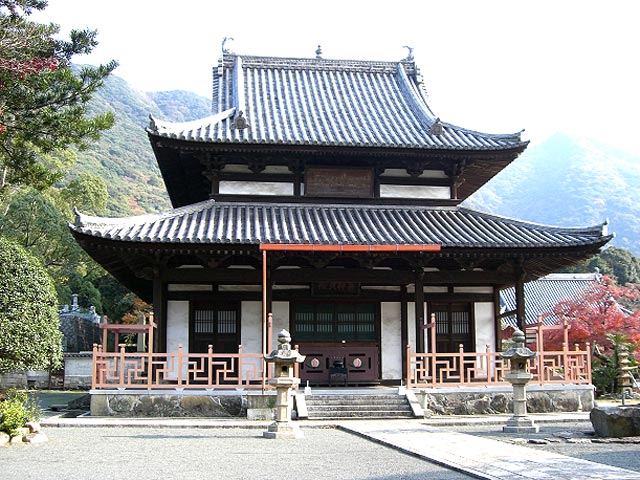
嘉穂劇場
昭和6年(1931)に創業した、江戸時代の歌舞伎様式を伝える現役の芝居小屋。休演日には劇場内を自由に見学できる。手動式の廻り舞台や木製の枡席、両花道などがみどころ。毎年開かれる旅役者の「全国座長大会」も有名。最大1200名を収容できる。登録有形文化財に指定されている。
Info
Business Hours
Price
Spot Category

Tunnel of cherry blossoms
The information provided reflects the details available at the time of the survey.
Please note that facility details may change due to the facility’s circumstances, so please check for the latest information before visiting.
This content has been translated using machine translation.
Information provided by: JTB Publishing
The content uses an automatic translation service, which is not always accurate.
The translated content may be different from the original meaning, so please understand and use it.

昭和6年(1931)に創業した、江戸時代の歌舞伎様式を伝える現役の芝居小屋。休演日には劇場内を自由に見学できる。手動式の廻り舞台や木製の枡席、両花道などがみどころ。毎年開かれる旅役者の「全国座長大会」も有名。最大1200名を収容できる。登録有形文化財に指定されている。

「飯塚地方の歴史と文化」をテーマに、考古・歴史・民俗・石炭の資料などを展示。なかでも、市内で発掘された立岩遺跡からの出土品である甕棺[かめかん](重要文化財)や、10面の前漢鏡[ぜんかんきょう](重要文化財)は必見だ。所要40分。

緑豊かな八木山高原にある動物園。園内には、大型動物のポニーをはじめ、ニホンイノシシ、ヤマアラシ、うさぎなどの動物のほか、チリーフラミンゴやアイガモなどの鳥類、爬虫類など、50種類以上の多彩な生き物がたくさん。エサやり体験やヒヨコとの触れ合いなどで身近に生き物が感じられる。自然の地形を生かしたキャンプ場やバーベキューコーナーもあり、まきまきパン焼きの体験できる。夏期には人工小川での水遊びも楽しめる。ユニークな動物たちを連れて車で会場まで運び移動動物園を開催している。

A town where temples were collected during the Edo period for the defense of Kurume Castle. It is lined with 17 temples, and still retains the features of the Edo period. In each quaint temple there are tombs of many of the predecessors who were active in Kurume. The most well-known people are King Shishi Takayama Hikokuro, the founder of Kurume mochi, Inoue Den, the founder of Kurume Atsuji, Motozo Sakamoto, and the Western painter Harue Koga.

Sōhō-gū of Suiten-gū, which is located throughout the country. The beginning was that Ise, who served Emperor Andoku's birth mother, Takakura Taira Nakamiya [Azechi no Tsuboune], enshrined the spirit of the Heike, who had perished in the Battle of Nōnoura, to mourn. It is known as the guardian deity of asanis, child-giving, water-relief, and children.

The temple of Obaku sect in a corner of Adachi Forest Park. The feudal lord, Tadamasa Ogasawara, was erected in Kanbun 5 (1665). It was later vanished by military fire and fire of Chōshū Cavalry at the end of the Tokugawa period. The main hall was rebuilt in Kyoho 2 (1717). Kaesando and others were built after the Meiji era. There is a garden behind the main hall, and the Sesshu Garden, which has natural stones in a borrowed view of Mount Ashitate, is a must. Please note that some of the precincts in the direction of the back mountain are unwatchable.
This website uses cookies so that we can provide you with the best user experience possible. Cookie information is stored in your browser and performs functions such as recognising you when you return to our website and helping our team to understand which sections of the website you find most interesting and useful.
Strictly Necessary Cookie should be enabled at all times so that we can save your preferences for cookie settings.
If you disable this cookie, we will not be able to save your preferences. This means that every time you visit this website you will need to enable or disable cookies again.
